Browse Primary Sources
Locate primary sources, including images, objects, media, and texts. Annotations by scholars contextualize sources.
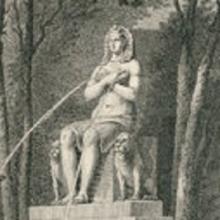
The Fountain of Regeneration
In this engraving of the Festival of Reunion or Unity of 10 August 1793, a female statue of Nature in the form of the Egyptian goddess Isis represents the regeneration of the French people. It sits on the site of the Bastille prison, whose fall signaled the beginning of the Revolution. The engraving depicts the statue as made of stone, but in fact it was hastily constructed of papier mache.

The Republic
Under the monarchy, the king was the country’s symbolic center. Removing him and establishing a republic made necessary not only a new constitution but also a new set of symbols. Here the revolutionaries transformed "Liberty" into "the Republic." Without her pike and cap, she seems more matriarchal, framed by flourishing plants.
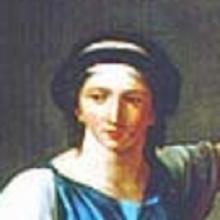
Liberty
In this spectacularly vivid rendition of Liberty, she holds the Phrygian cap of freed slaves on a pike. That, combined with her colorful pants, suggests aggressive liberty. Yet the scrolls in her right hand also underscore the role of legislation in defining her purview. Further, simply the use of a female figure balanced some of the aggressive pose.
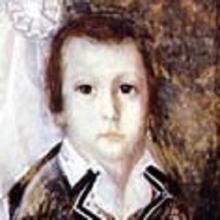
Provincial Painting—Minatures
Surrounded by her children, this woman represents conventionality and respectability.
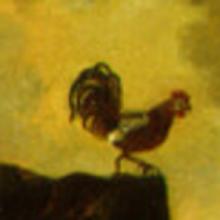
The Triumph of Liberty
In this extraordinary painting stands a formidable and powerful figure of liberty with her pike and cap. As the title of this work suggests, Liberty appears here as a warrior surveying the field of battle from a commanding height. Furthermore, the cock crowing at the dawn suggests the arrival of an entirely new day.
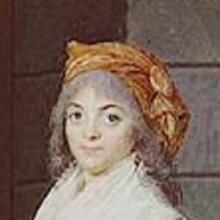
Woman with a Basket in Front of a Door to the Prison
Despite the demure expression created by her huge eyes, this woman also shows adherence to the Revolution through her scarf, similar in shape and color to the Phrygian cap.
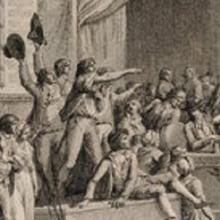
Day 1 of Prairial of the Year III
Men and women threaten the deputies on 20 May 1795. They demand "Bread and the Constitution of 1793." This day marked one of the last interventions of ordinary women into national politics.
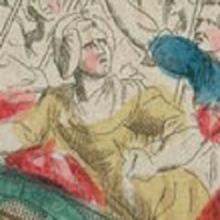
To Versailles, To Versailles!
The women who arrived, though lightly armed, were no shrinking violets. They insisted that the royal family return to Paris where, in fact, they would find themselves under virtual house arrest.
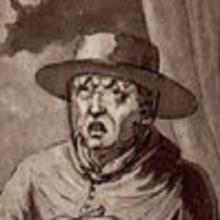
Mea Culpa of the Pope
Although the revolutionaries long regarded the Pope as an enemy, their anger was stoked significantly by the papal decision to decree as unacceptable the Civil Constitution of the Clergy. This decision, hardly unexpected given the way that the revolutionary settlement upended church tradition and papal authority, apparently weighed heavily on Louis XVI.
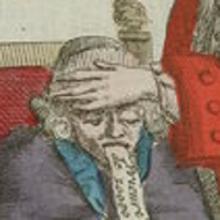
The Great Nausea of Monsignor
This engraving focuses on expurgating the clergy, this time with vomiting as the intended method. Here, the cleric spits up the unfair advantages enjoyed in the old regime.
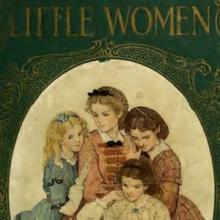
Little Women, "Amy's Valley of Humiliation"
Little Women is one of the most beloved works of American literature. Widely translated and read throughout the world, Alcott's story has inspired films, television programs, cartoons, dolls, and theatrical productions, as well as extensive critical commentary from scholars in literature, history, women's studies, and other fields.

Little Women, “The Valley of the Shadow”
Little Women is one of the most beloved works of American literature. Widely translated and read throughout the world, Alcott's story has inspired films, television programs, cartoons, dolls, and theatrical productions, as well as extensive critical commentary from scholars in literature, history, women's studies, and other fields.

The Phoenix Indian School, 1896
"Phoenix Indian School; Largest in the Southwest and Second Largest in the Country: Need of Military Garrisons in Arizona Grow Less as this School increases Its Influence Among the Nation's Wards -- Over One Hundred and Fifty Boys and Girls," read the headline of the New York Times article written by a journalist after a visit to the school on July 5, 1896.
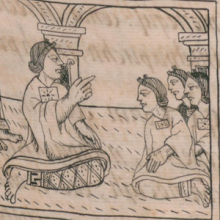
Advice of an Aztec Mother to Her Daughter
Franciscan friar Bernardino de Sahagún recorded this text in the mid-16th century as part of an effort to gather information about native Aztec history and customs. Sahagún went to Mexico in 1529 as one of the first missionaries assigned to the newly conquered territory of New Spain.

Age of Consent Laws
Information on the ages used historically in western age of consent laws is not readily available. This table has been compiled from a combination of historical and contemporary sources. By 1880, the first date chosen, many western nations had established an age of consent for the first time, typically of 12 or 13 years.
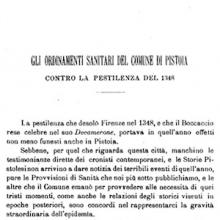
Health Ordinances of Pistoia, 1348
Cities in Italy passed legislation aimed at preventing or reducing the effects of plague. Since the scientific view was that plague was caused by miasma or bad air, the measures targeted rotting and smelling matter, viz. cloth which could retain miasma and spread disease as it was passed person to person, dead bodies, and rotting meat.
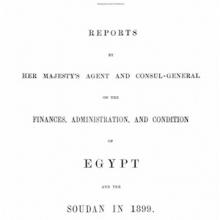
Reports by Her Majesty's Agent and Consul-General
Despite efforts to resist, by the end of the 19th century, almost all of the Middle East had fallen under the control of European powers. Whether in the form of a protectorate or colony, European powers made changes to the indigenous educational system that impacted children.
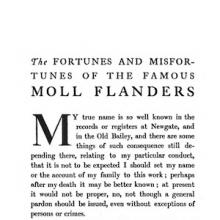
The Fortunes and Misfortunes of the Famous Moll Flanders
Daniel Defoe's novel The Fortunes and Misfortunes of the Famous Moll Flanders, published in 1722, is a useful historical text for examining the everyday lives of female children as well as the possibilities of girlhood in 18th-century British society.
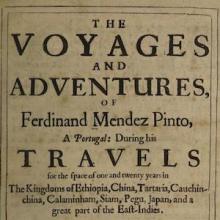
The Voyages and Adventures of Ferdinand Mendez Pinto
One of the most important results of the early modern period was the spread of European culture generally, and Christian religion particularly, throughout the globe. The selection below, taken from the diaries of Mendez Pinto, a Portuguese sailor captured by the Chinese, illustrates the early stages of contact between Europe and the East.
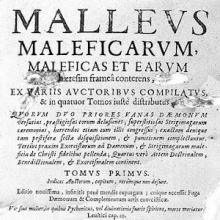
Malleus Maleficarum, Witch Hunter Manual
Perhaps the most spectacular manifestation of early modern European discrimination against women was the conviction of thousands of women for witchcraft. Over three centuries, more than 40,000 people were executed as witches, 75 percent of them female.